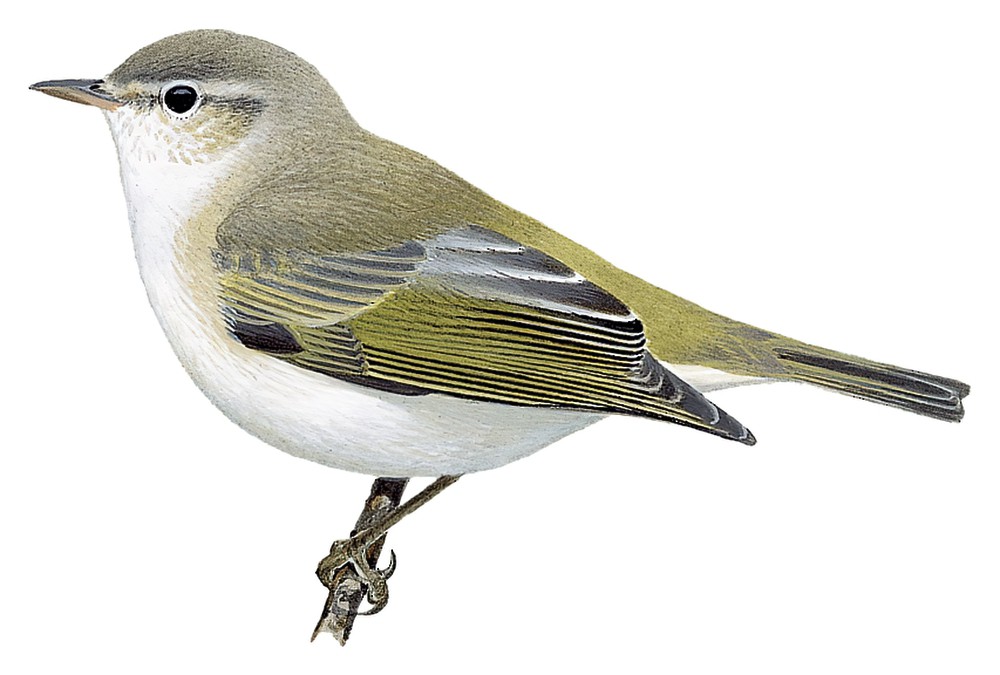Eastern Bonelli’s Warbler / Phylloscopus orientalis

Eastern Bonelli's Warbler
SCI Name:
Protonym: Phyllopneuste orientalis Vogelfang p.232
Taxonomy: Passeriformes / Phylloscopidae / Phylloscopus
Taxonomy Code: eabwar1
Type Locality: Wadi Haifa, Nubia.
Author: Brehm, CL
Publish Year: 1855
IUCN Status: Least Concern
DEFINITIONS
PHYLLOSCOPUS
(Phylloscopidae; Ϯ Willow Warbler P. trochilus) Gr. φυλλον phullon leaf; σκοπος skopos seeker < σκοπεω skopeō to examine; "VI. Fam. Sylviadae Vigors. 1 ... Phylloscopus: Sylv. trochilus Lath. u.v.a. ... 1 Von der Lebensweise dieser Vögel weiß man so viel, daß sie blühende Gewächse aufsuchen und vom Blumensaste, gewiß auch von Insecten leben. Von den Trochiliden unterscheiden sie sich hauptsächlich durch die Bildung des Schwanzes, der überhaupt schwächer, und die größere Länge der Schwungfedern, wovon man auf einen ganz verschiedenen Flug schließen darf." (Boie 1826); "Phylloscopus Boie, 1826, Isis von Oken, col. 972. Type, by monotypy, Motacilla trochilus Linnaeus." (Watson in Peters 1986, XI, 221).
Var. Blythoscopus.
Synon. Abrornis, Acanthopneuste, Asilus, Cryptigata, Cryptolopha, Cuculis, Culicipeta, Fanissa, Ficaria, Herbivocula, Mochthopoeus, Neornis, Oreopneuste, Phaeorhadina, Philomela, Phyllobasileus, Phyllopneuste, Pindalus, Pycnosphrys, Reguloides, Rhadina, Seicercus, Sibilatrix, Solifer, Sylvicola, Trocheligone, Trochilus, Zelica.
orientale / orientalis
L. orientalis eastern, oriental < oriens, orientis east.
● Asia; ex “Anser moschoviticus” of Albin 1731-1738, and “Anser chinensis” of Linnaeus 1747 (syn. Anser cygnoides).
● India; ex Ardea antigone Linnaeus, 1758, “Grus orientalis” of Brisson 1760, and “Indian Crane” of Latham 1785 (syn. Antigone antigone).
● East Indies (= Seram and New Guinea); ex “Casoar des Indes orientales” of d’Aubenton 1765-1781, pl. 313 (syn. Casuarius casuarius).
● India; ex “Eastern Parrot” of Latham 1781 (?syn. Eclectus roratus).
● East Indies (= Amboina); ex “Coucou noir des Indes” (= ♂) and “Coucou tacheté des Indes” (=♀) of Brisson 1760 (subsp. Eudynamys scolopaceus).
● East Indies (=Java); ex “Rollier des Indes” of Brisson 1760 (Eurystomus).
● East Indies; ex “Merula indica” of Brisson 1760, “Merle des Indes Orientales” of d’Aubenton 1765-1781, pl. 273, fig. 2, and “Ash-rumped Thrush” of Latham 1783 (syn. Lalage nigra).
● India; ex “Indian Bee-eater” and “Coromandel Bee-eater” of Latham 1782-1787 (Merops).
● Asia; ex “Onocrotalus” or “Pelecanus” of previous authors (syn. Pelecanus onocrotalus).
● "91. TETRAO. ... orientalis. 12. T. pedibus antice pilosis: abdomine gulaque atra, collari ferrugineo, cauda cuneiformi. Tetrao orientalis. Hasselq. it. 278. n. 43. Perdix damascena. Will. orn. 128. Francolin. Tournef. it. I. p. 158. t. 158. Habitat in Oriente." (Linnaeus 1758) (Pterocles).
● China; ex “Tourterelle brune de la Chine” of Sonnerat 1782, and “Chinese Turtle” of Latham 1783 (Streptopelia).
● China; ex “China Owl” of Latham 1801 (syn. Strix seloputo).
UPPERCASE: current genus
Uppercase first letter: generic synonym
● and ● See: generic homonyms
lowercase: species and subspecies
●: early names, variants, mispellings
‡: extinct
†: type species
Gr.: ancient Greek
L.: Latin
<: derived from
syn: synonym of
/: separates historical and modern geographic names
ex: based on
TL: type locality
OD: original diagnosis (genus) or original description (species)












